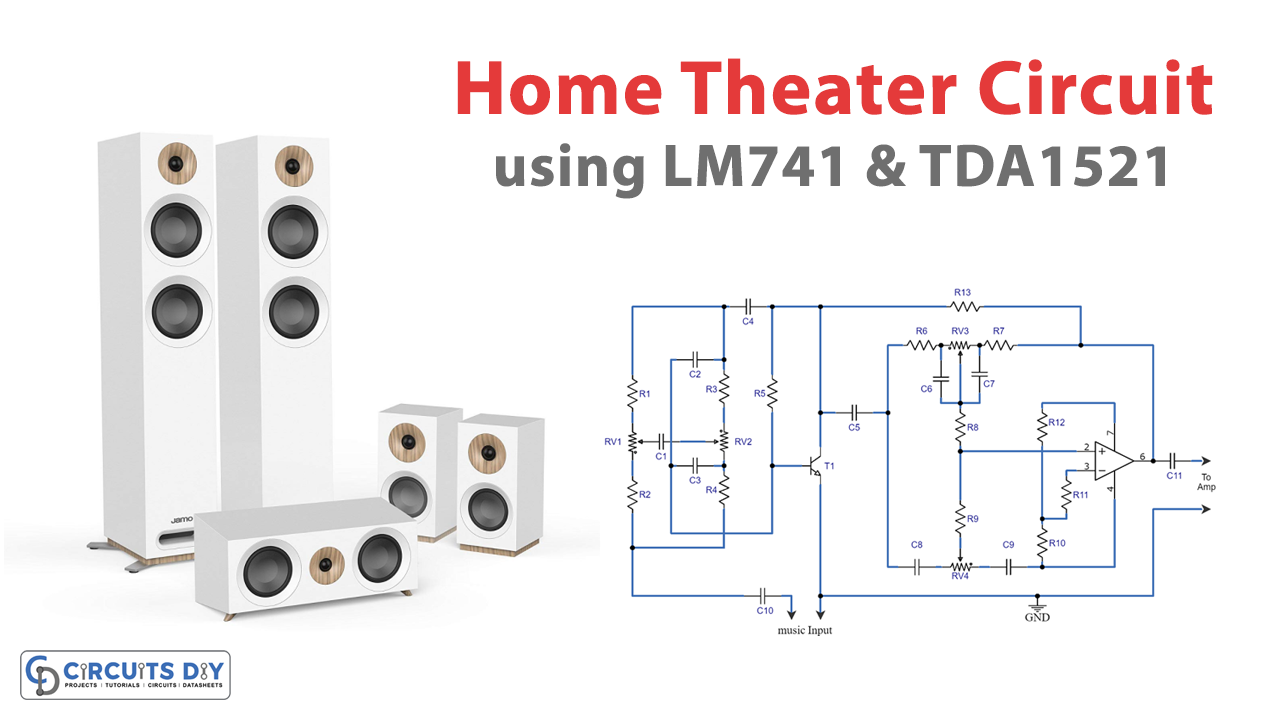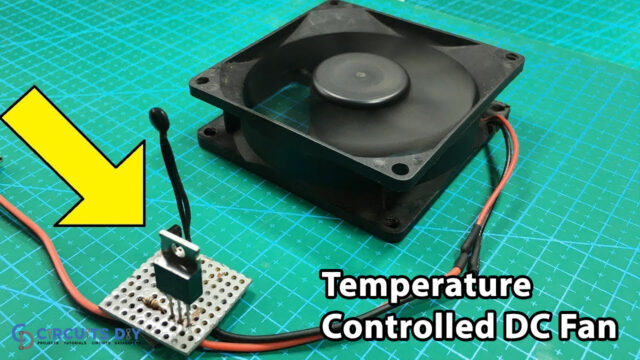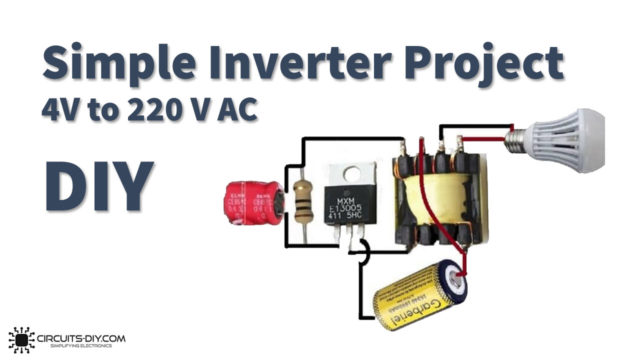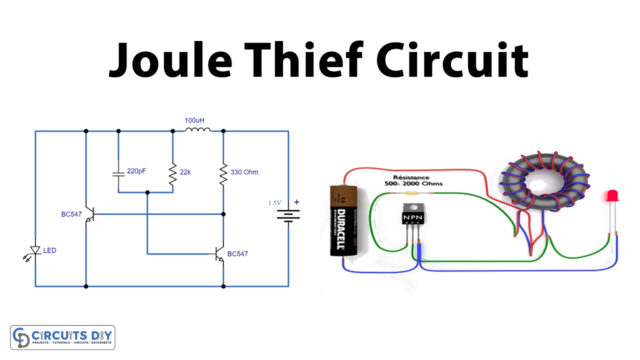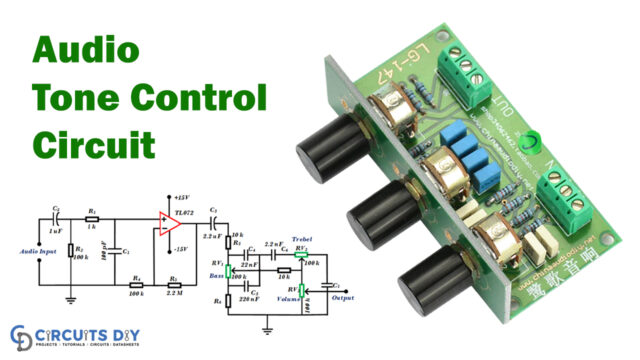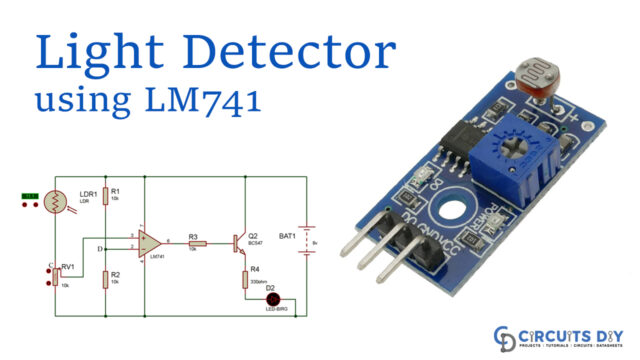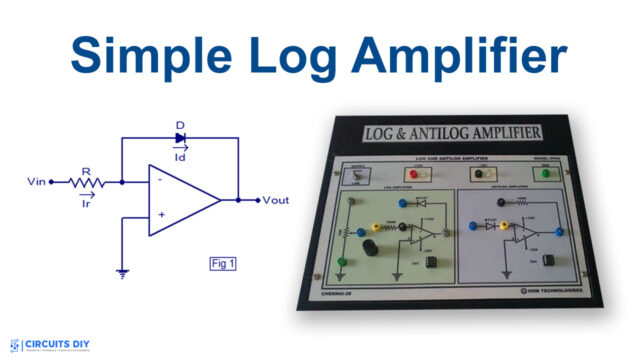Introduction
Home theater systems are a staple in most households today, offering the convenience of enjoying movies in the comfort of your own home. However, the audio quality from commercial brands may only sometimes meet your expectations. If you’re looking for a way to enhance your home theater experience without breaking the bank, you’ll be pleased to know that building your own home theater system is not only possible but also quite simple.
In this blog, we’ll take you through the basics of constructing an inexpensive home theater circuit design that will deliver rich and dynamic sound.
Hardware Required
You will require the following hardware for the Home Theater Circuit.
| S.no | Components | Value | QTY |
|---|---|---|---|
| 1 | IC | UA741 | 1 |
| 2 | Non-Polar Capacitor | (C1) = 0.1uF (C2,3) = 0.022uF (C4,10,5,11) = 1uF (C6,7) = 0.033uF (C8,9) = 0.0033uF | 1 1 4 2 2 |
| 3 | Resistor | (R1,2,3,4,5,9) = 2k2, (R6,7,8,10,11,12,13) 10k | 6 7 |
| 4 | Variable Resistor | (VR1,2,3,4) = 100K | 4 |
| 5 | Transistor | BC547B | 1 |
Circuit Diagram
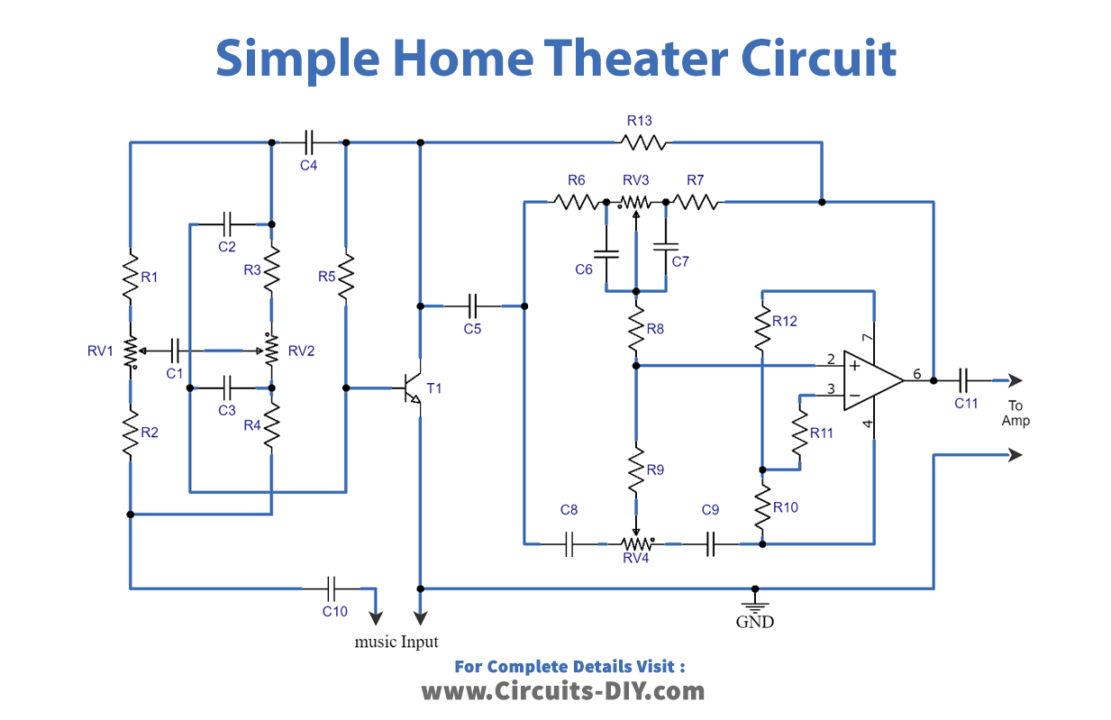
Working Explanation
The circuit diagram is straightforward and effectively handles the relevant bandwidths. The first section is a transistor solely responsible for frequency dimensioning, while the second section uses an IC 741 for improved bass and treble control. These two sections are connected in series, which results in deeper and sharper sound quality that can still be adjusted to your preference using four pots connected to each unit.
Optimization
The units can be optimized for extreme and heavy bass or trimmed for extreme “chilling” treble effects. Two of these units can be combined to form the final home theater circuit. There are potentiometers to control for tailored sound levels. However, the units must be enhanced with the appropriate woofers and tweeters for optimal audio output.
Amplifier Circuit
A stereo amplifier circuit is also included in the design. One channel is used for driving the woofers, and the other channel is used for inducing the tweeters. You can either integrate this amplifier circuit into your existing setup or build it yourself if you’re an electronics enthusiast.
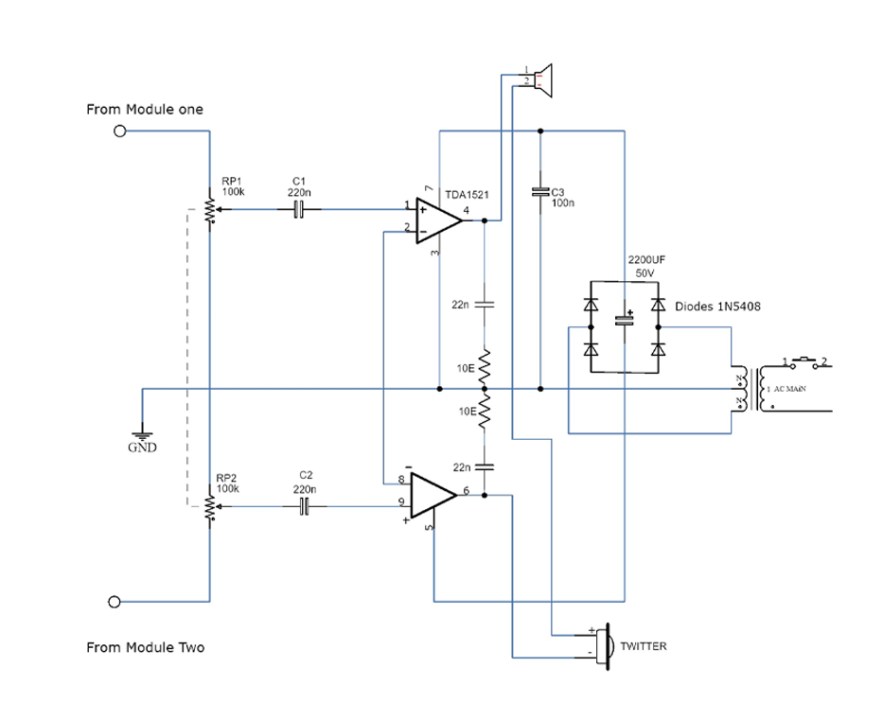
Final Words
In conclusion, this home theater circuit design offers an affordable solution for those seeking high-quality audio. Try this circuit to polish your circuit designing skills, and for any questions, feel free to use the comment section.

